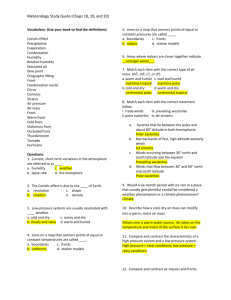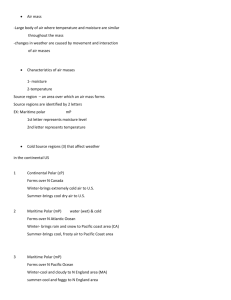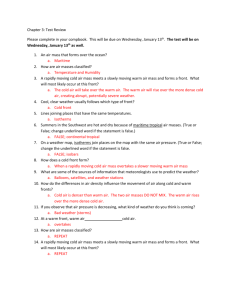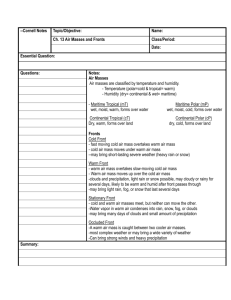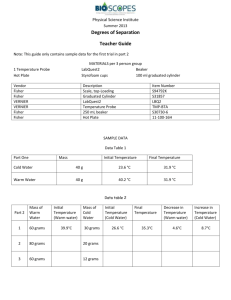File
advertisement
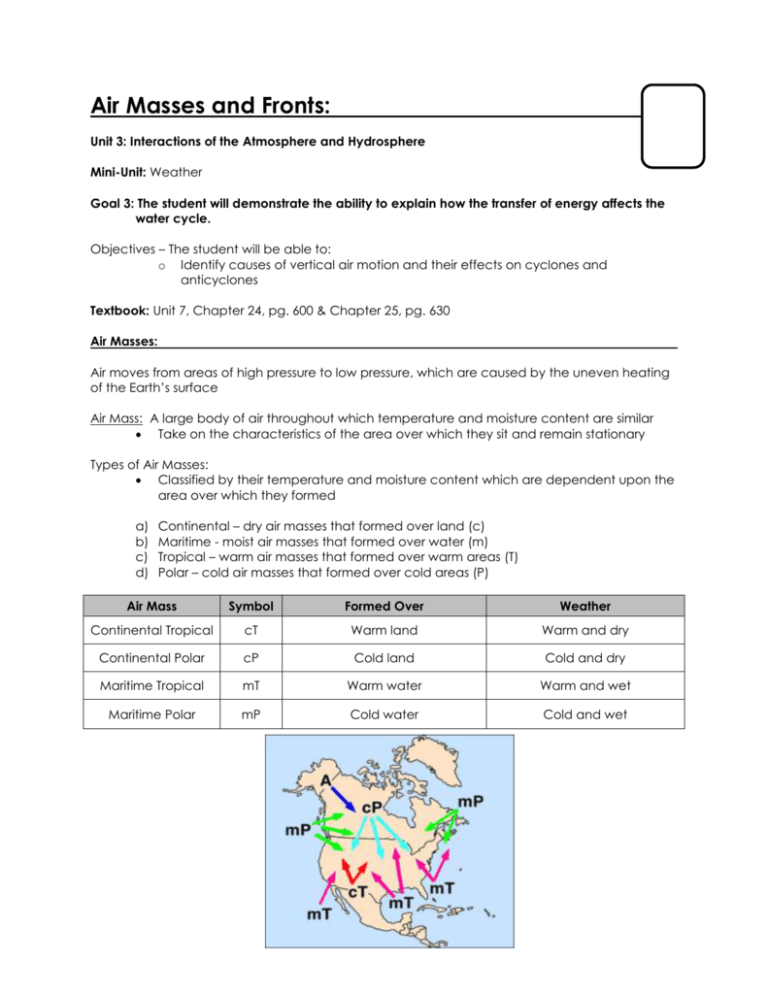
Air Masses and Fronts: Unit 3: Interactions of the Atmosphere and Hydrosphere Mini-Unit: Weather Goal 3: The student will demonstrate the ability to explain how the transfer of energy affects the water cycle. Objectives – The student will be able to: o Identify causes of vertical air motion and their effects on cyclones and anticyclones Textbook: Unit 7, Chapter 24, pg. 600 & Chapter 25, pg. 630 Air Masses: Air moves from areas of high pressure to low pressure, which are caused by the uneven heating of the Earth’s surface Air Mass: A large body of air throughout which temperature and moisture content are similar Take on the characteristics of the area over which they sit and remain stationary Types of Air Masses: Classified by their temperature and moisture content which are dependent upon the area over which they formed a) b) c) d) Continental – dry air masses that formed over land (c) Maritime - moist air masses that formed over water (m) Tropical – warm air masses that formed over warm areas (T) Polar – cold air masses that formed over cold areas (P) Air Mass Symbol Formed Over Weather Continental Tropical cT Warm land Warm and dry Continental Polar cP Cold land Cold and dry Maritime Tropical mT Warm water Warm and wet Maritime Polar mP Cold water Cold and wet Fronts: Fronts: Boundaries between air masses; dense cold air does not mix with less dense warm air; do not exist in tropics because no real temperature differences Cold Front: The front edge of a moving mass of cold air that pushes beneath a warm air mass like a wedge; results in precipitation if warm air mass is humid, severe storms if cold front moves quickly Warm Front: The front edge of advancing warm air mass that replaces cold air with warmer air; generally results in precipitation over a large area Stationary Front: A front of air masses that move either very slowly or not at all, weather similar to a warm front Occluded Front: A front that forms when a cold air mass overtakes a warm air mass and lifts the warm air mass of the ground and over another air mass Cyclones and Anticyclones: Cyclone: A low pressure storm system that is characterized by rotating wind that moves towards the rising air of the central low pressure region Usually lasts several days Spin counter clockwise Follow storm tracks or routes Anticyclones: Flows outward from a center of high pressure in a clockwise motion Bring dry weather because of sinking air in the middle does not promote cloud formation




